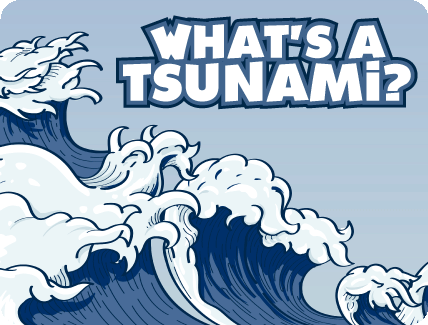

















Have you ever seen video clips of monstrous tsunamis engulfing trees, roads and cars? Very scary, right? The thought leaves many people in shudders. The word tsunami originated from two Japanese words—tsu (harbour) and nami (wave).
Surprisingly, the cause of a tsunami isn’t related to ocean waves. Tsunamis are created when there is disruption or movement in the Earth’s outermost layer, or crust, that is found under the ocean bed. This causes water to form huge waves. The speed of a tsunami depends on the depth of the ocean, and not the distance between where it’s formed and the shore. They can travel at the speed of about 800 km/h, which is similar to the speed of a jet plane!
A tsunami is not restricted to only one large wave. Different waves of varying heights and strengths can occur over five minutes or even an hour. The first wave is known to be small and not very damaging. But the second, third, or fourth waves are much bigger.
Most tsunamis occur because of earthquakes in the ocean bed.. Other causes could be landslides, volcanic eruptions or even a meteor strike (although that is a rare occurrence).
The UN General Assembly designated 5 November as World Tsunami Day in December 2015 to spread international awareness and share ideas on how to tackle the threat of tsunamis. They come up with strategies to reduce damage and to stay safe during this natural calamity. Some schools encourage students to talk and write about tsunamis on this day.